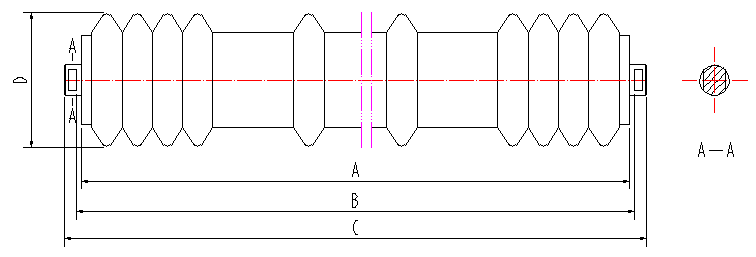 Afrikaans
Afrikaans  Albanian
Albanian  Amharic
Amharic  Arabic
Arabic  Armenian
Armenian  Azerbaijani
Azerbaijani  Basque
Basque  Belarusian
Belarusian  Bengali
Bengali  Bosnian
Bosnian  Bulgarian
Bulgarian  Catalan
Catalan  Cebuano
Cebuano  Corsican
Corsican  Croatian
Croatian  Czech
Czech  Danish
Danish  Dutch
Dutch  English
English  Esperanto
Esperanto  Estonian
Estonian  Finnish
Finnish  French
French  Frisian
Frisian  Galician
Galician  Georgian
Georgian  German
German  Greek
Greek  Gujarati
Gujarati  Haitian Creole
Haitian Creole  hausa
hausa  hawaiian
hawaiian  Hebrew
Hebrew  Hindi
Hindi  Miao
Miao  Hungarian
Hungarian  Icelandic
Icelandic  igbo
igbo  Indonesian
Indonesian  irish
irish  Italian
Italian  Japanese
Japanese  Javanese
Javanese  Kannada
Kannada  kazakh
kazakh  Khmer
Khmer  Rwandese
Rwandese  Korean
Korean  Kurdish
Kurdish  Kyrgyz
Kyrgyz  Lao
Lao  Latin
Latin  Latvian
Latvian  Lithuanian
Lithuanian  Luxembourgish
Luxembourgish  Macedonian
Macedonian  Malgashi
Malgashi  Malay
Malay  Malayalam
Malayalam  Maltese
Maltese  Maori
Maori  Marathi
Marathi  Mongolian
Mongolian  Myanmar
Myanmar  Nepali
Nepali  Norwegian
Norwegian  Norwegian
Norwegian  Occitan
Occitan  Pashto
Pashto  Persian
Persian  Polish
Polish  Portuguese
Portuguese  Punjabi
Punjabi  Romanian
Romanian  Russian
Russian  Samoan
Samoan  Scottish Gaelic
Scottish Gaelic  Serbian
Serbian  Sesotho
Sesotho  Shona
Shona  Sindhi
Sindhi  Sinhala
Sinhala  Slovak
Slovak  Slovenian
Slovenian  Somali
Somali  Spanish
Spanish  Sundanese
Sundanese  Swahili
Swahili  Swedish
Swedish  Tagalog
Tagalog  Tajik
Tajik  Tamil
Tamil  Tatar
Tatar  Telugu
Telugu  Thai
Thai  Turkish
Turkish  Turkmen
Turkmen  Ukrainian
Ukrainian  Urdu
Urdu  Uighur
Uighur  Uzbek
Uzbek  Vietnamese
Vietnamese  Welsh
Welsh  Bantu
Bantu  Yiddish
Yiddish  Yoruba
Yoruba  Zulu
Zulu bend pulley and snub pulley
Understanding Bend Pulleys and Snub Pulleys Key Components in Conveyor Systems
In the realm of material handling and conveyor systems, the importance of pulleys cannot be overstated. Among the various types of pulleys used in these systems, bend pulleys and snub pulleys play crucial roles in ensuring efficiency and functionality. This article delves into the characteristics, applications, and significance of bend and snub pulleys, shedding light on how they contribute to the overall performance of conveyor systems.
What Are Bend Pulleys?
Bend pulleys, often referred to as redirecting or guide pulleys, are designed to change the direction of the belt in a conveyor system. They are strategically placed at angles to guide the belt around corners or bends, ensuring smooth operation and minimizing wear. Typically made from robust materials, bend pulleys need to withstand considerable forces as they guide the belt on its path. Their surface might be coated or textured to enhance grip and reduce slippage of the belt, which is crucial for maintaining consistent motion.
The efficiency of a conveyor system can significantly depend on the design and placement of bend pulleys. If these pulleys are not correctly positioned or maintained, they can lead to increased wear on the conveyor belt, decreased efficiency, and, ultimately, premature failure of the system. Moreover, the angle of the bend is essential; too sharp an angle can cause significant stress on the belt, while a gentle curve facilitates smoother operation.
Snub Pulleys Enhancing Belt Tension
Snub pulleys, on the other hand, serve a different but equally vital purpose. Their primary function is to increase the tension on the conveyor belt. By creating a larger contact angle between the belt and the pulley, snub pulleys allow for better traction and help in overcoming slippage that may occur on drive pulleys. This added tension ensures that the belt operates efficiently, maintaining the proper alignment and minimizing the risk of misalignment that could lead to damage or operational hiccups.
bend pulley and snub pulley

Snub pulleys are typically positioned near the drive pulley in a conveyor system. The effective tension provided by snub pulleys contributes to the overall stability of the belt, allowing it to carry heavier loads without sagging or slipping. This is particularly essential in applications where the conveyor system is subjected to varying loads, as consistent tension can help avoid disruptions in operation.
Applications and Importance
Both bend and snub pulleys are integral to various industrial applications, including mining, manufacturing, and logistics. They are found in systems that transport materials ranging from raw ores to finished products. Their design flexibility means they can be customized to suit specific operational requirements, including load capacity, belt speed, and conveyance direction.
The efficiency of a conveyor system largely depends on the quality and functionality of its components, and pulleys are critical in this regard. Well-maintained bend and snub pulleys can significantly enhance the performance of the conveyor, reducing downtime due to maintenance and increasing overall productivity. Furthermore, the careful selection and installation of these pulleys can lead to significant cost savings over time, as the lifespan of the conveyor belt can be extended and operational efficiency improved.
Conclusion
In summary, bend and snub pulleys are essential components of conveyor systems that play crucial roles in directing and tensioning the conveyor belt. By understanding their functions and importance, businesses can better design and maintain their conveyor systems, ensuring smooth and efficient operations. Investing in high-quality pulleys and adhering to maintenance best practices will not only enhance performance but also contribute to a reduction in operational costs, thereby delivering a significant return on investment in the long run. As industries continue to evolve and demand increases, the role of reliable and efficient pulley systems will remain at the forefront of material handling solutions.
-
Revolutionizing Conveyor Reliability with Advanced Rubber Lagging PulleysNewsJul.22,2025
-
Powering Precision and Durability with Expert Manufacturers of Conveyor ComponentsNewsJul.22,2025
-
Optimizing Conveyor Systems with Advanced Conveyor AccessoriesNewsJul.22,2025
-
Maximize Conveyor Efficiency with Quality Conveyor Idler PulleysNewsJul.22,2025
-
Future-Proof Your Conveyor System with High-Performance Polyurethane RollerNewsJul.22,2025
-
Driving Efficiency Forward with Quality Idlers and RollersNewsJul.22,2025





























